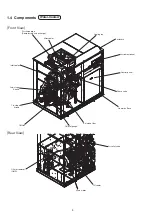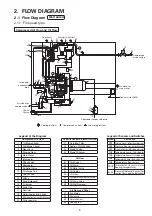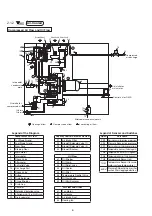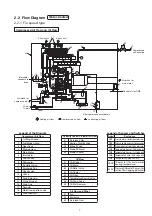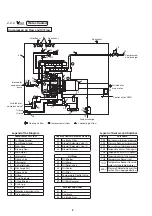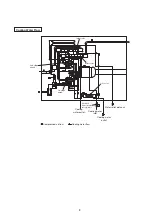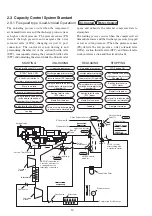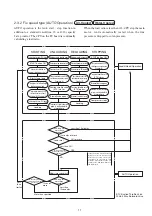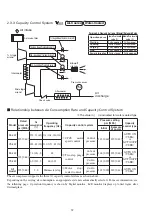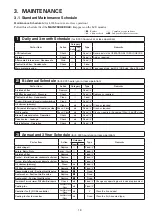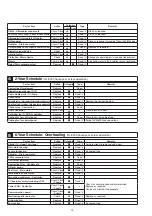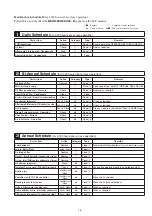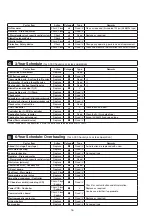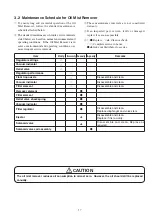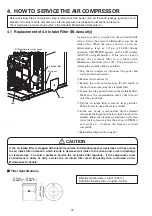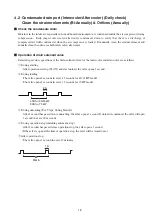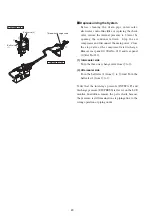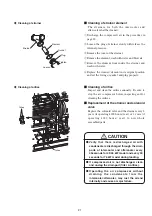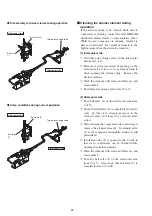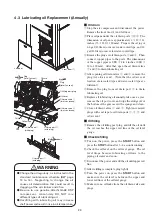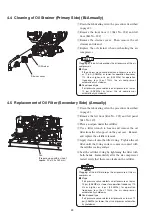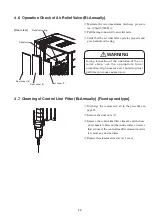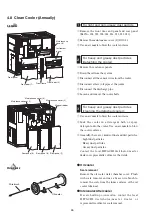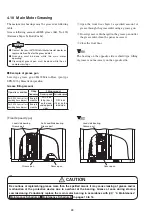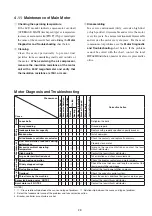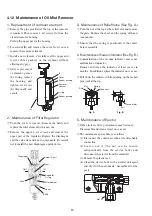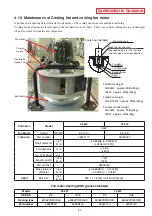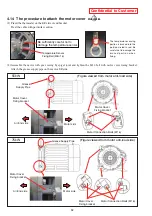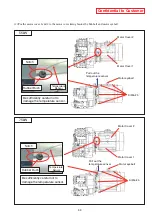
18
4. HOW TO SERVICE THE AIR COMPRESSOR
4.1 Replacement of Air Intake Filter (Bi-Annually)
■
Filter Specifications
Effective filtration area: 40.8 ft² (3.79
m
2
)
Filtration efficiency: 98% or higher (full life)
12.7mm
254mm
φ
241.2mm
(0.50inch)
(10.0inch)
(
φ
9.50inch)
Before servicing the air compressor, stop it, disconnect the power (turn off the earth leakage (ground) circuit
breaker) and verify that the compressor’s internal pressure has dropped to atmospheric pressure.
The maintenance intervals shown refer to the standard Maintenance Schedule (A).
A pressure sensor is provided on the suction throttle
valve to detect the pressure differential across the air
intake filter. When the sensor detects a pressure
differential as large as 0.72 psi (4.98 kPa) during
operation, AIR FILTER appears on the LCD display
with E0.21 on digital monitor. If this occurs, clean or
replace the air intake filter in accordance with
Maintenance Schedule (A) or (B). The procedure for
cleaning the air intake filter is as follows.
①
Stop the air compressor, disconnect the power and
verify no internal pressure.
②
Remove the front door (1).
③
Remove the cover and wipe away the dirt inside of
the duct before removing the air intake filter.
④
Loosen the wing nut and remove the air intake filter.
Make sure the contamination and/or dust doesn’t
enter the airend side.
⑤
Tap the air intake filter to remove large particles.
Then blow air to clean the surface of filter.
⑥
In the case of oily or carbon dust, dip the element
into neutral detergent and water solution for about 30
minutes. Rinse the element several times with clean
water (water pressure is less than 39 psi (0.27MPa))
and air-dr y it. Confirm the element is dried
completely.
⑦
Reinstall and tighten the wing nut.
Differential pressure sensor
Cover
Air Intake filter
Wing nut
Duct
CAUTION
If the air intake filter is clogged with dust/dirt particles; Differential pressure (resistance of flow) across
the air intake filter increases, which results in decreased air intake to the airend and a rise in discharge
air temperature. To avoid a problem, service the air intake filter regularly. If the compressor room
environment is dusty or dirty, service the air intake filter more frequently than instructed on the
Maintenance Schedule.

